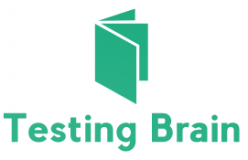After you have identified and defined activities, the next logical step is to identify the sequence in which these activities should be carried out. Therefore, the Project Management Book of Knowledge (PMBOK) published by the Project Management Institute (PMI) has defined the next process as the Sequence Activities process. In this process you define how the actual work for the project has to be carried out.
Before you start sequencing the project activities, the first task in hand for you is to identify and define relationship among various project activities. The relationships among the project activities indicate how these activities are related to each other, such as dependencies of the activities on each other. For each activity, you decide on an activity that is a predecessor – an activity that should be completed before you start the current activity, and a successor – an activity that should follow the current activity.
Additionally, there would be some activities that can be performed simultaneously. However, it is not necessary that the activities performed simultaneously must start or end at the same time. Depending on the predecessor of the activities, each activity has its start time. Similarly, the end time of the activity depends on time period required to complete the activity.
Depending on the sequence at which you can complete the activities, you can classify the relationship that can exist among various activities of the project into the following categories:
- Finish to Start: Finish to start is one of the most common relationships that exist among the project activities. In this type of relationship, an activity can start only after the predecessor activity is complete.
- Start to Start: In this type of relationship, an activity cannot start before the other activity starts. This type of relationship usually requires both activities to start at the same time and run parallel to each other. Unlike finish to start relationship, this is the least common type of relationship among the project activities.
- Finish to Finish: In this type of relationship, an activity cannot finish before the other activity finishes. This type of relationship usually exists between the activities that are the predecessors of the same activity or the completion of one activity is an input for the completion of another activity.
- Start to Finish: In this type of relationship, an activity must start before another activity finishes. This type of relationship usually exists between the activities where start of an activity is an input for the completion of another activity.
After you have derived relationships among the activities of the project, you get a sequence that creates a network of activities interlinked with each other based on their relationship. This network of the project activities is known as network diagram of the project.
